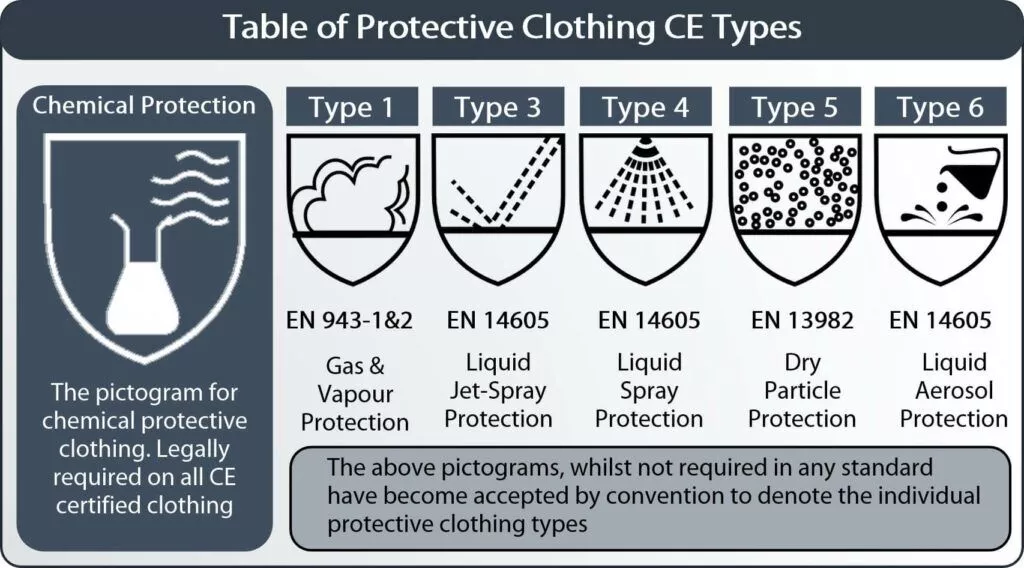When it comes to keeping oneself safe, disposable safety coveralls are an essential item that is commonly used in many industries. These coveralls are designed to protect individuals from hazardous materials, chemicals, and other harmful substances. However, with the growing demand for disposable coveralls, it becomes important to ensure that they meet certain standards to guarantee their effectiveness. This article delves into the disposable coverall standards, with a particular emphasis on the differences between the EU and USA standard.
In the EU, the standard that governs disposable coveralls is called ‘Personal Protective Equipment Directive’ (89/686/EEC). The directive outlines the requirements for the design, manufacture, testing, and use of personal protective equipment (PPE), including disposable coveralls. The EU’s disposable coverall standard covers different categories, depending on the severity of the risks encountered in the workplace. For instance, ‘type 5’ disposable coveralls are designed to protect workers from particulate and airbone hazards, while ‘type 6’ coveralls are used to protect them from liquid spray and light splashes.
Disposable coverall standards are essential to guarantee the safety of individuals in various industries. These standards serve as a guide for manufacturers to produce coveralls that meet specific requirements and provide protection for users. The standards encompass a wide range of principles that govern the manufacturing process of disposable coveralls, and the materials used to produce them. These principles are followed to ensure that the coveralls meet the necessary safety standards and offer reliable protection.

On the other hand, in the USA, the disposable coverall standard is regulated by the Occupational Safety and Health Administration (OSHA), which is a federal agency responsible for ensuring safe and healthy working conditions in the workplace. OSHA’s standards govern the manufacture and use of PPE, including disposable coveralls. They cover a wide range of PPE, depending on the type of hazard to be protected against. For instance, OSHA’s protective clothing standard, which covers disposable coveralls, is contained in 29 CFR §1910.132.

Despite the differences in their regulatory framework, both the EU and USA standards share common requirements that disposable coveralls must meet. These requirements include the selection of suitable materials to produce the coveralls, the design of the coveralls, and their performance in protecting individuals from harmful substances. They also require manufacturers to provide users with clear instructions on the proper use and care of the coveralls.
One of the significant differences between EU and USA standards for disposable coveralls is the way they classify these coveralls. The EU standard is classified based on the type of protection it provides, while the OSHA standard classifies coveralls based on their protection against specific hazards, such as flames, heat, and electrical arc. The USA standard also requires disposable coveralls to meet the American National Standards Institute (ANSI) or National Fire Protection Association (NFPA) standards, based on the specific hazardous substances involved.
Another difference between the two standards is the testing procedures used to determine the effectiveness of disposable coveralls in protecting individuals from hazardous materials. The EU standard requires manufacturers to subject the coveralls to certain tests, such as the test for penetration by water, dust, and biological agents. It also requires the coveralls to meet specific performance grades, which indicate the level of protection they provide. In contrast, the USA standard only requires manufacturers to test their disposable coveralls for flame resistance, arc resistance, and other hazards specific to the work environment.
As the demand for disposable coveralls increases, proper adherence to the standards becomes increasingly important. Neither the EU nor the USA standard is superior to the other; they all serve a unique purpose in guaranteeing the safety of individuals in different industries. Therefore, regardless of the standard that is adopted, it is essential to ensure that it meets the minimum requirements for the production of safe and effective disposable coveralls.
Disposable coveralls serve an important purpose in protecting individuals from hazardous materials and harmful substances in various industries. The EU and USA regulations provide essential guidelines to manufacturers and users of these coveralls. Despite the differences between EU and USA standards, they both ensure that disposable coveralls meet the necessary safety requirements to guarantee the protection of individuals in different work environments. It is crucial to ensure proper adherence to these standards to ensure effective protection of individuals. Therefore, ensuring that we use disposable coveralls that meet the relevant standards is essential for our safety.


